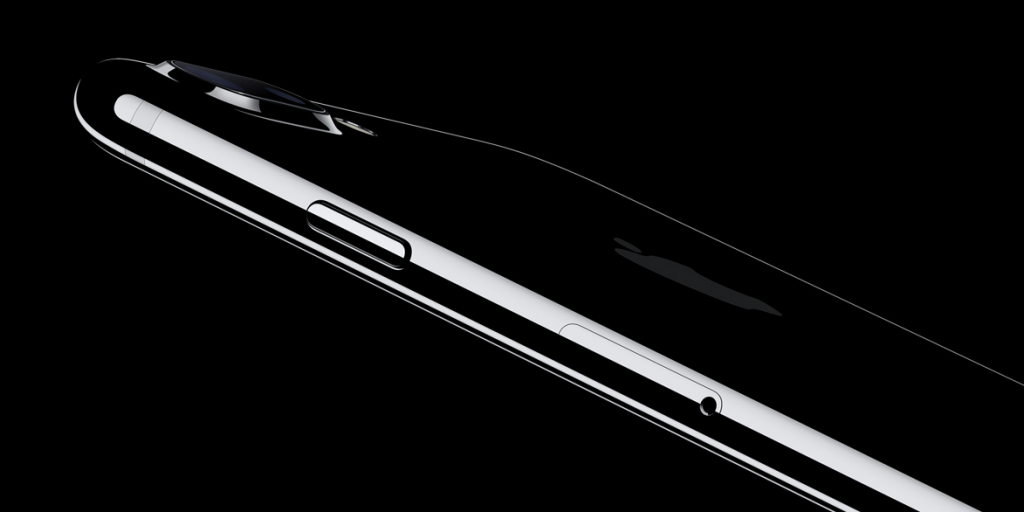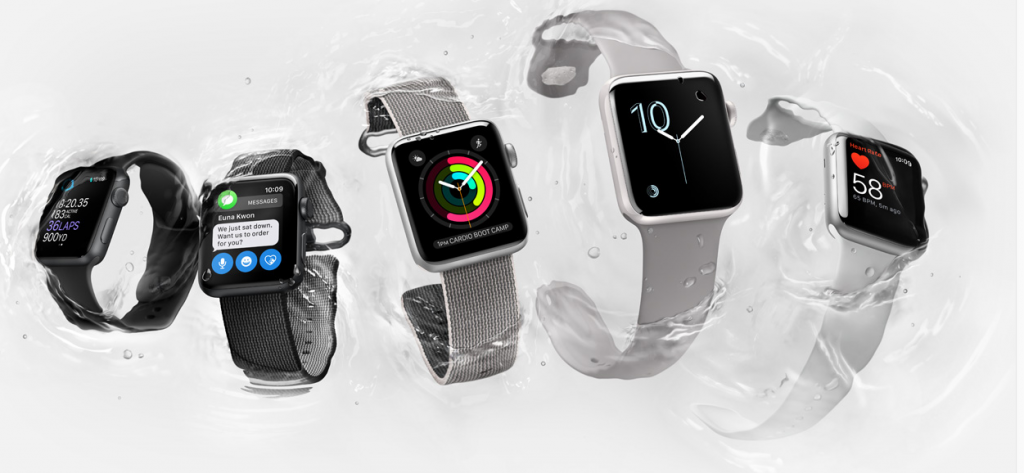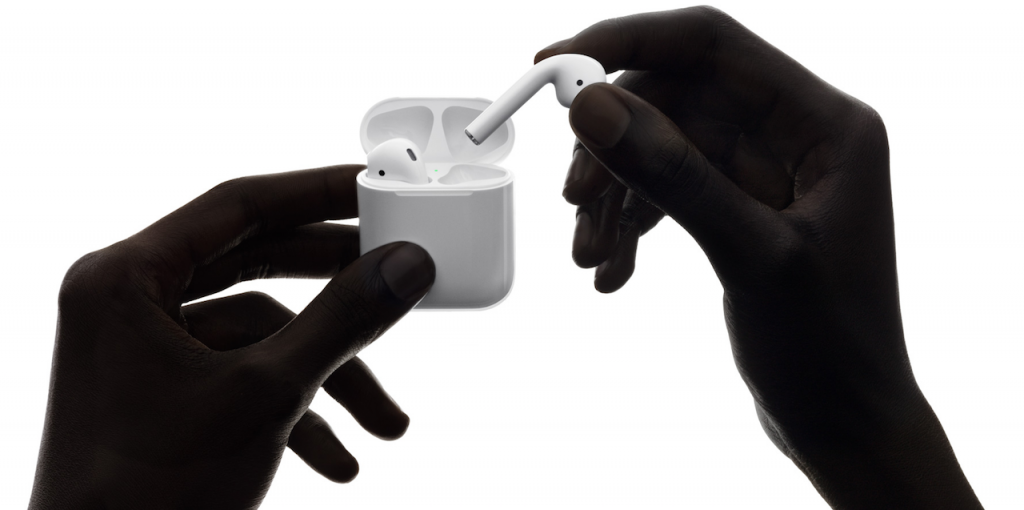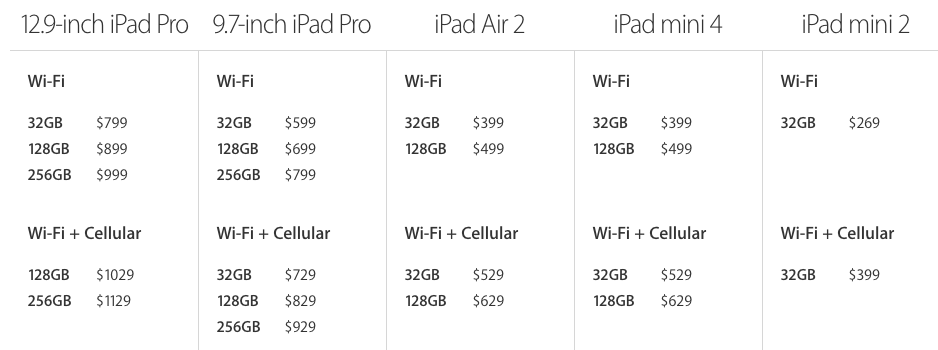As we anticipated, Apple used its September 7th media event (which you can watch) to announce the new iPhone 7 and iPhone 7 Plus, along with the new Apple Watch Series 2 and a pair of wireless earbuds called AirPods. Apple also announced that iOS 10 and watchOS 3 are due to ship on September 13th. Although Apple didn’t mention the iPad or Mac during the event, the company later modified its iPad lineup with new configurations and pricing and said that macOS Sierra would ship on September 20th. Let’s look at the key details of Apple’s announcements and explore what they might mean to you — there’s a lot to get through!
iPhone 7 and iPhone 7 Plus
It’s what we were all waiting for. Apple announced the new iPhone 7 and iPhone 7 Plus, which are the same sizes as the iPhone 6s and 6s Plus, respectively. The company stuck with the silver, gold, and rose gold case colors, but dropped space gray in favor of two black finishes: a matte black and a polished jet black.

As rumored, the new models drop the 3.5mm analog headphone jack entirely, but they come with a pair of Lightning-based EarPods for listening to music and making phone calls, plus a free Lightning-to-headphone adapter so you can continue to use older audio equipment. You can also buy additional adapters for $9.
The new iPhones have notably improved cameras. Along with a 7-megapixel front-facing camera that offers body and face detection plus image stabilization, the main rear-facing camera provides a 12-megapixel sensor with an ƒ/1.8 aperture lens that Apple claims is 60 percent faster and 30 percent more energy efficient than the camera in the iPhone 6s. The flash features four LEDs for 50% more light, plus a flicker sensor to help correct for artificial lighting. Even better, optical image stabilization is now standard on both models, and both can capture raw images with wide-gamut color.
For photography buffs, the iPhone 7 Plus is particularly interesting, because it features another rear-facing camera, which provides a telephoto lens with an ƒ/2.8 aperture. Apple’s Camera app seamlessly combines the two cameras to provide 2x optical zoom (up to 10x digital zoom) and will have a Portrait mode that focuses on people in the foreground while blurring the background. (Portrait mode is due to ship in an update to iOS later this year.)
The Home button takes a page from the Force Touch trackpad; it’s no longer a physical button but instead uses Apple’s Taptic Engine to make it feel as though you’re pushing a button. Apple says it should be more responsive and more reliable.
Losing the headphone jack and making the Home button force-sensitive helped Apple in another way: the iPhone 7 models are now dust and water resistant. Don’t toss your iPhone 7 in the pool, since they’re rated for immersion in only up to 1 meter of water, but it should withstand an errant splash or fall into the waves at the beach.
The iPhone 7 models are powered by Apple’s quad-core A10 Fusion processor, which automatically switches between two cores dedicated to high performance and two that are optimized for power efficiency to prolong battery life. Their screens are improved too, with Apple promising 25% more brightness with a wider color display.
Pricing of the iPhone 7 and 7 Plus remains the same, but the storage amounts double from those available for the iPhone 6s and 6s Plus. For the iPhone 7 and 7 Plus, then, the 32 GB models cost $649 and $749, 128 GB of storage costs $749 and $869, and 256 GB will run you $849 and $969. Oddly, the jet black color is available only in 128 GB and 256 GB sizes. Or you can choose the iPhone Upgrade Program’s payments of $32 to $46 per month for 2 years, depending on which model you want. Preorders for the new iPhone 7 models start on 9 September 2016, with availability coming a week later.
Apple Watch Series 2
Less expected than the iPhone 7 was the Apple Watch Series 2, Apple’s first hardware update to the company’s wrist-based iPhone accessory, adding a much-requested GPS chip and making the watch significantly more water resistant.

From the outside, little has changed, although Apple did discontinue the mega-expensive gold Apple Watch Edition (which topped out at $17,000) in favor of the new ceramic Apple Watch Edition Series 2, which starts at $1249. Apple extended its lifestyle partnerships, updating the Apple Watch Hermès edition and introducing an Apple Watch Nike+, both of which differ from the stock models only in bands and custom watch faces.
The most significant addition is the GPS chip, which enables runners to track their routes and get performance information without carrying a bulky iPhone. When you complete a workout, the Activity app shows a map of your route along with speed data. Third-party apps like Strava and Runkeeper should also be able to take advantage of the GPS chip. Apple also doubled the brightness of the screen to make it easier to see in direct sunlight.
Swimmers, rejoice! Apple made the new watch water resistant to a depth of 50 meters and beefed up the Workout app with Pool and Open Water workout options that count laps and track average lap pace. You still can’t take it scuba diving or waterskiing, but for most standard aquatic activities, you shouldn’t have to worry about water damage.
Finally, those who found the original Apple Watch sluggish will appreciate Apple’s second-generation S2 System in a Package (SiP) chip, which Apple claims is 50% faster and includes a graphics processing unit that can double performance. Of course, the new models come with watchOS 3, which also provides significant speed boosts.
The Apple Watch Series 2 starts at $369 for the 38 mm model. Prices increase with the 42 mm model and with certain bands. You can preorder on September 9th, with availability on September 16th, although the Nike+ version won’t ship until October and the Hermès version ships on September 23rd.
If the Apple Watch still feels a little pricey, you can buy an Apple Watch Series 1 starting at $269—it’s an upgraded original model with the new S2 processor but not the GPS chip, water resistance, or brighter screen.
AirPods
Although Apple did the right thing and included a Lightning-to-headphone adapter with every iPhone 7, the company also said, “the future is wireless.” To bolster that claim, Apple announced the AirPods, a pair of wireless headphones that eliminate the iconic white wires while still providing high-quality audio output and input.

The AirPods pair simultaneously to your iPhone and Apple Watch with a simple one-tap setup, and you can switch them to work with your iPad or Mac easily. However, they won’t work with non-Apple devices, or even with older Apple devices that aren’t running iOS 10, watchOS 3, or macOS Sierra.
Thanks to optical sensors and an accelerometer, the AirPods can detect when they are in your ears, turning on and off automatically to save power. Apple claims you can get 5 hours of listening time on one charge; you recharge them in a special case that holds multiple additional charges for 24 hours of life before it too needs recharging via a Lightning cable.
The AirPods include beamforming microphones that can focus on where your voice is coming from and filter out background noise, which should improve phone calls and recognition with Siri. Speaking of which, just double-tap one of the AirPods to invoke Siri to issue commands to whatever device the AirPods are paired with.
Apple says the AirPods will be available in late October for $159.
iPad Lineup Changes
Apple currently sells three standard iPads, the iPad Air 2, the iPad mini 4, and the iPad mini 2, and they just became better deals. Prices remain the same, but for each price point, Apple doubled the base storage, so you can now buy the iPad Air 2 or iPad mini 4 with either 32 GB ($399 for Wi-Fi or $529 for Wi-Fi plus cellular) or 128 GB ($499/$629), and the iPad mini 2 in just 32 GB ($269/$399).
If you’re instead considering a 9.7-inch or 12.9-inch iPad Pro, the storage options are unchanged, but the 128 MB model dropped in price by $50, and the 256 GB model is now $100 cheaper.


